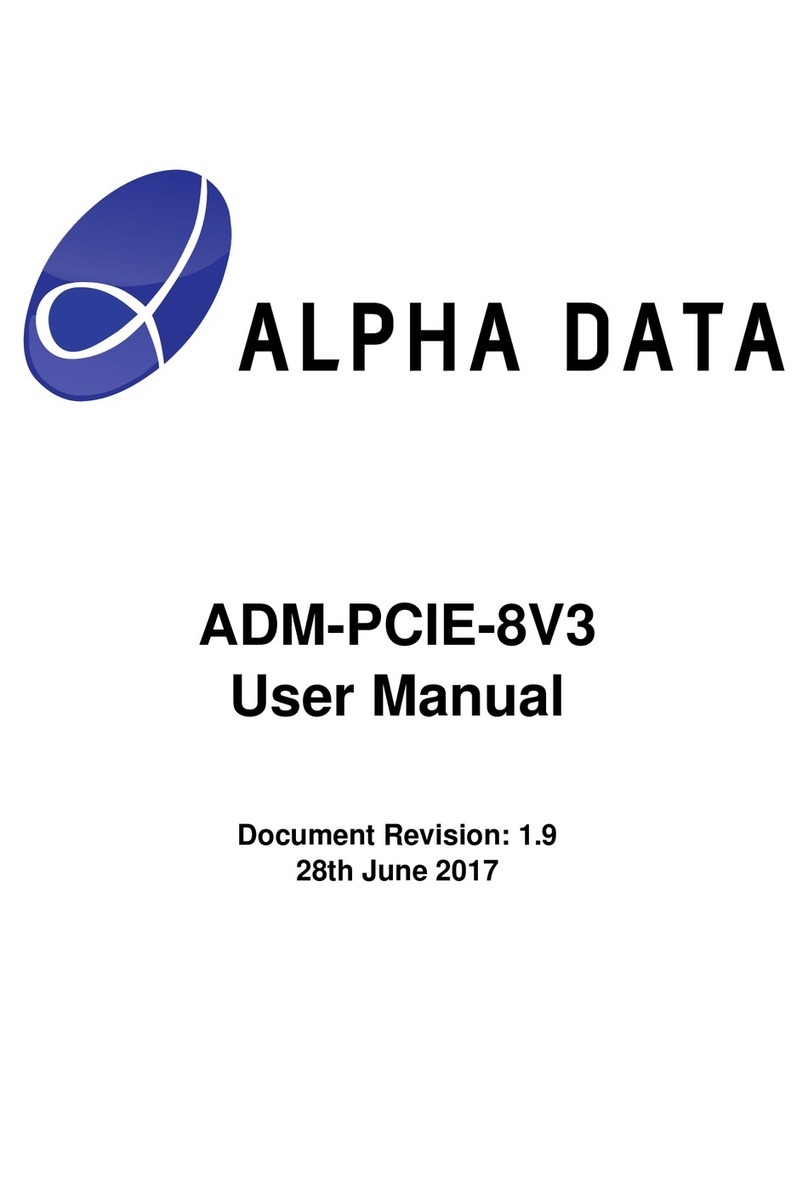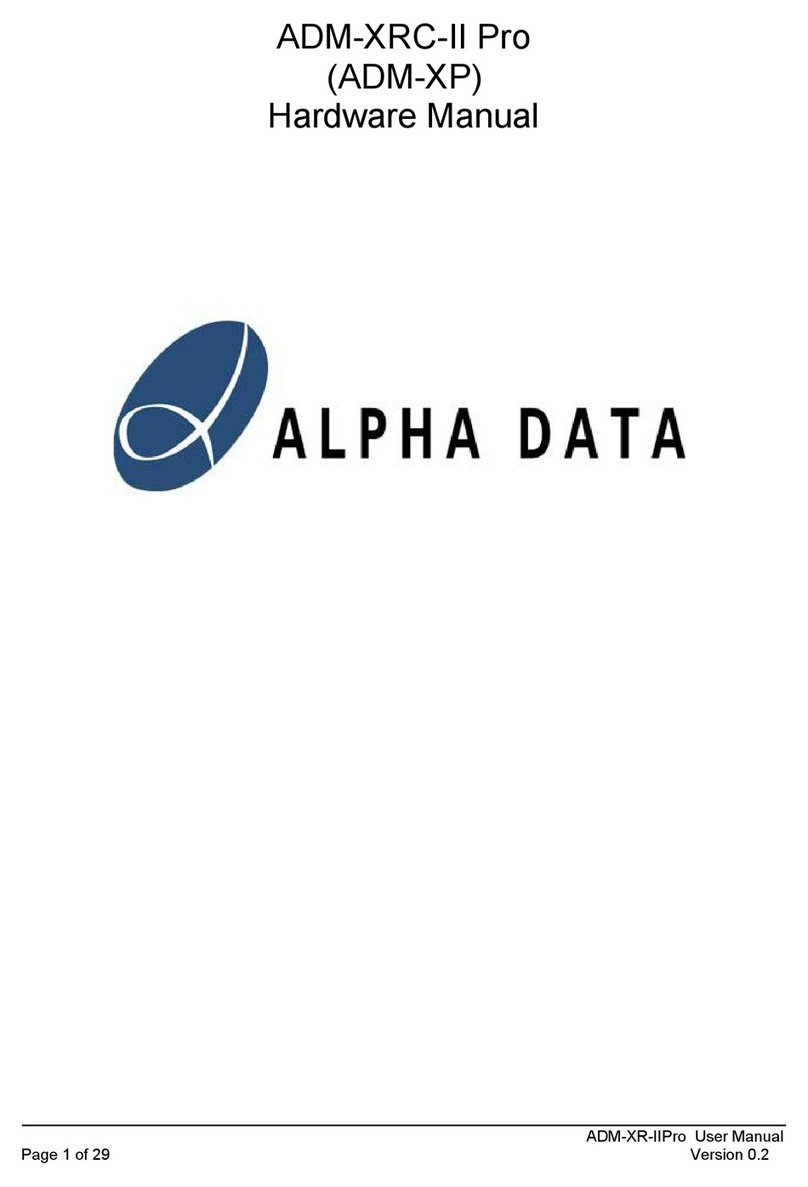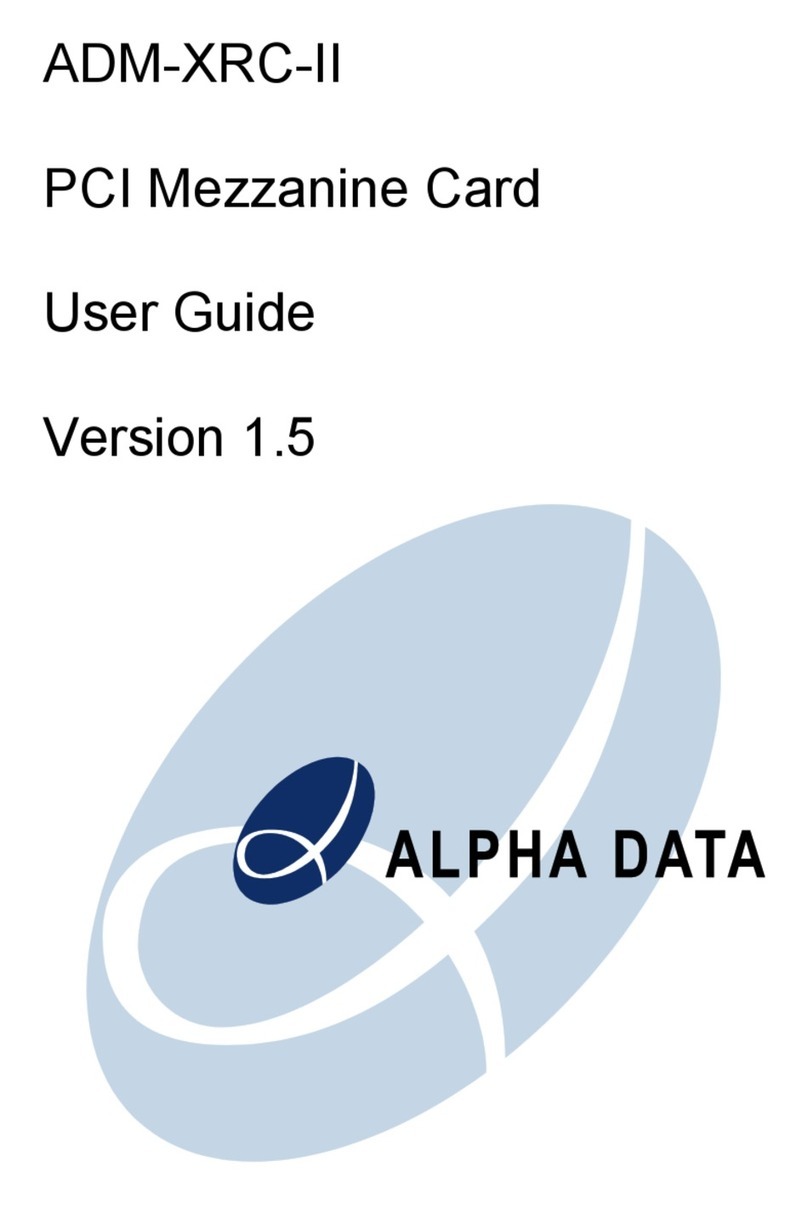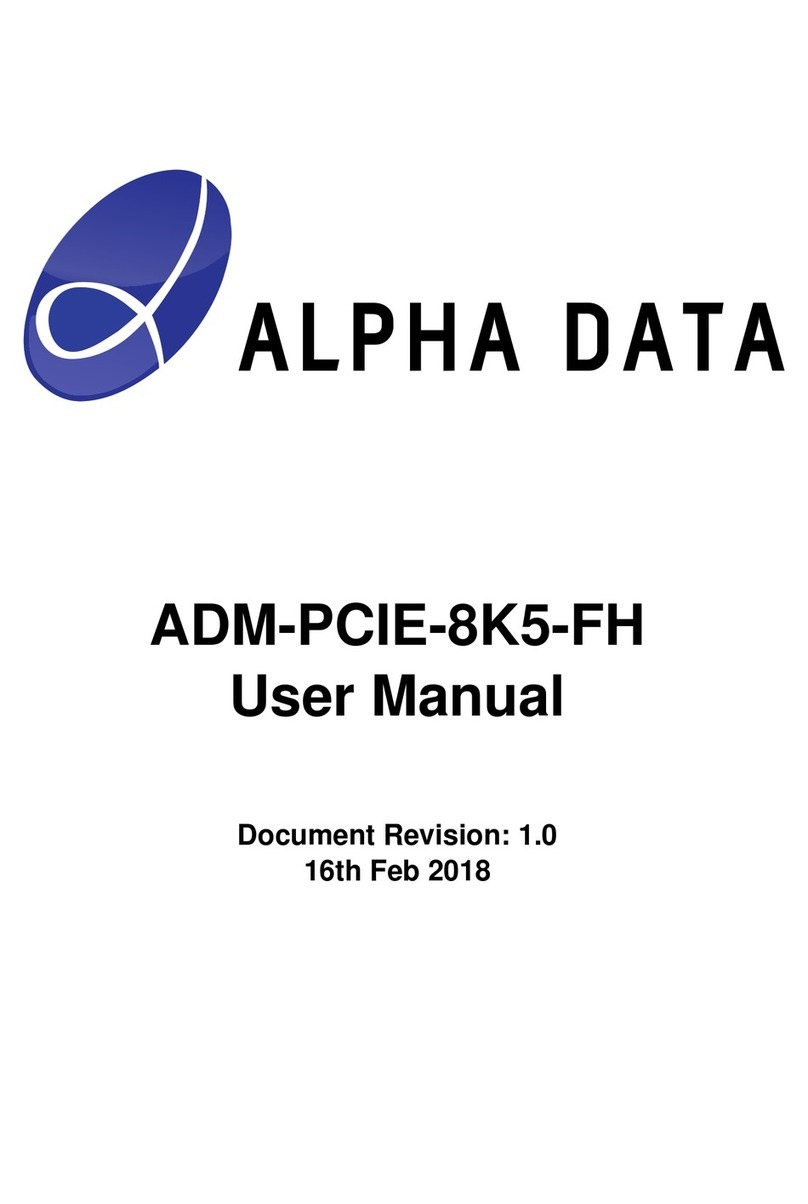ADM-XRC-5T2-ADV User Manual
Table of Contents
1. Introduction........................................................................................................................1
1.1. Specifications............................................................................................................1
2. Hardware Installation.........................................................................................................2
2.1. Motherboard requirements........................................................................................2
2.2. Handling instructions.................................................................................................2
2.3. Installing the ADM-XRC-5T2-ADV onto a PMC motherboard ..................................2
2.4. Installing the ADM-XRC-5T2-ADV if fitted to an ADC-PMC .....................................2
2.5. Installing the ADM-XRC-5T2-ADV if fitted to an ADC-EMC .....................................2
3. Software Installation ..........................................................................................................2
4. Board Description ..............................................................................................................3
4.1. Local Bus...................................................................................................................4
4.2. Flash Memory............................................................................................................5
4.2.1. Board Control Flash..........................................................................................5
4.2.2. User FPGA Flash .............................................................................................5
4.3. Health Monitoring......................................................................................................5
4.4. JTAG.........................................................................................................................6
4.5. Clocks........................................................................................................................7
4.5.1. LCLK.................................................................................................................7
4.5.2. REFCLK ...........................................................................................................8
4.5.3. PCIe Reference Clock......................................................................................8
4.5.4. User MGT Clocks.............................................................................................8
4.5.5. FCN MGT Clock...............................................................................................8
4.5.6. Rear (Pn4) Clocks............................................................................................8
4.5.7. PCI Clocks........................................................................................................8
4.6. User FPGA................................................................................................................9
4.6.1. Configuration....................................................................................................9
4.6.2. I/O Bank Voltages...........................................................................................10
4.6.3. Memory Interfaces..........................................................................................10
4.7. FCN Interface – MGT Links ....................................................................................11
4.7.1. Copper Mating Cables....................................................................................11
4.7.2. Optical Mating Cables ....................................................................................11
4.7.3. Example Gigabit I/O Applications...................................................................12
4.7.4. Front Panel multi-gigabit I/O Control & Status Signals ..................................12
4.8. Pn4 I/O....................................................................................................................13
4.8.1. Pn4 Signalling Voltage ...................................................................................13
4.9. XMC Interface .........................................................................................................13
4.9.1. Primary XMC Connector, P15........................................................................13
4.10. ADV212 Interface....................................................................................................14
4.10.1. Signal Description...........................................................................................14
4.10.2. JPEG Processor Interface Pin Locations.......................................................15
5. Design Examples.............................................................................................................16
5.1. Revision History ......................................................................................................17
ADM-XRC-5T2-ADV User Manual
Version 1.0































